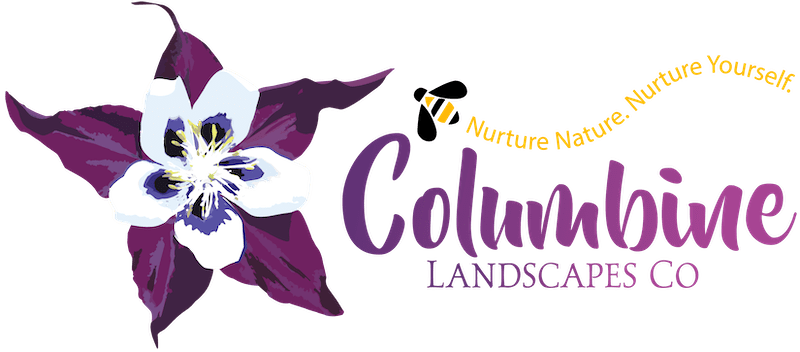16 Oct How to Create Habitat for Pollinators in Your Landscape
Creating habitat for pollinators is a wonderful way to support the local ecosystem while simultaneously enhancing your landscape for your own enjoyment. Here are some steps you can take:
Plant Native Wildflowers: Choose a diversity of native wildflowers that bloom at different times throughout the year to provide a continuous source of nectar and pollen for pollinators.
- Native species, as opposed to hybrids, are best. You can tell a hybrid (best to avoid) by its name.
- Anything with single quotes like Echinacea purpurea ‘PowWow Wild Berry’, for example, is an indication that the plant is a hybrid.
- Ruffly flowers are often a sign that the plant has been hybridized
- Another indicator is an ‘x’ between the genus and specific epithet, for example, Lavandula x intermedia, meaning it’s a “cross” or hybrid.
Provide Shelter: Include a mix of plants with varying heights, such as groundcovers, understory plants like perennials and shrubs, and trees for your canopy layer, to offer shelter and nesting sites for pollinators. Dead wood, logs, or rock piles can also serve as habitat for certain species.
Avoid Pesticides: Minimize or eliminate the use of pesticides in your garden. Instead, focus on organic pest control methods or use natural alternatives to protect your plants.
Provide Water: Create a water source like a shallow dish with rocks in it to provide a safe drinking spot for pollinators. Butterflies need the rocks to land on while they drink, so they don’t fall in and drown, so don’t skip this part. Make sure to keep it filled with fresh water.
Create a Diversity of Habitats: Consider adding features like a meadow, a butterfly garden, or wet areas to attract a wider range of pollinators. Bring water into your landscape in the form of a rain garden, bird bath, or small recirculating fountain.
Leave Some Bare Ground: Some native bees require patches of bare ground for nesting. Leave small areas of your garden unplanted or cover them with a thin layer of mulch to provide suitable nesting sites.
Be Mindful of Maintenance: Avoid clearing your garden completely during fall and winter. Many pollinators hibernate or overwinter in plant debris, so leaving some undisturbed areas can be beneficial.
Learn and Share: Educate yourself about pollinators and their needs. Here are a couple links for more information and to get certified: https://www.nwf.org/CERTIFY and https://rockies.audubon.org/habitat-hero/apply. Sources like these will help you share your knowledge with others to raise awareness and inspire more people to create pollinator-friendly habitats.
You may notice that most of these things that benefit pollinators also benefit you. Good design includes plantings of varied heights and season-long color. Meanwhile, we all know chemicals aren’t good for human health either. So supporting pollinators is not an entirely altruistic endeavor. Per the tenets of Biophilia, we humans prosper with more connection to nature. When we nurture nature, we truly are also nurturing ourselves.
To the Glory of the Garden,
Eva Montane
President, Columbine Landscapes

Sorry, the comment form is closed at this time.